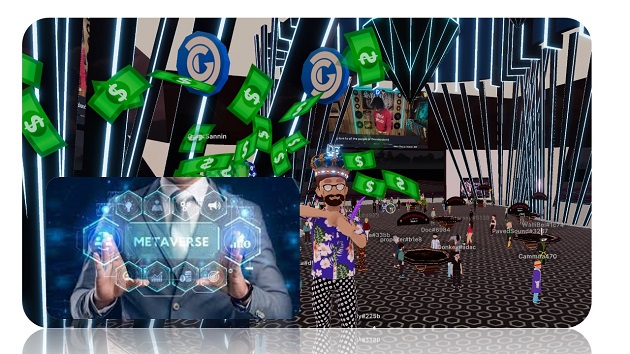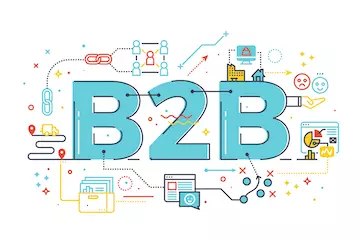All payments — aside from exchanging cash at the point of sale — are now virtual. Even though a business may believe it must accept alternative payment methods in the virtual world — such as cryptocurrencies like Bitcoin — using cryptocurrencies for payment transactions in the metaverse is fraught with difficulties. Why?
Crypto and Other Digital Currencies for Payments
Working with cryptocurrencies can be trickier for businesses than with conventional payments. With cryptocurrencies like Bitcoin, the value changes. Additionally, they are unregulated; and many customers do not prefer using these as a form of payment because they are not widely utilized or trusted by consumers.
Digital currencies in the category of stablecoins have less volatility through backing with fiat currencies (although even this is questionable), but still no regulation, yet.
While many countries are developing central bank digital currencies (CBDC) and they currently appear to have the most trust of these types of payments, the Federal Reserve has not yet decided on whether to pursue or implement a CDBC.
Another digital currency that can be considered for the metaverse is a closed loop payment. These are payments by “coins” or “tokens” that would only work in this specific environment. The same principle exists in clubs and vacation locations, but, in the digital realm, they are also currently used in online games like Fortnite, where you can buy “currency” upfront and spend it only in this environment.
Closed loop payments are mostly offered to distract the user from the awareness of spending real money. This takes place in games where the user can buy gear and pay with game-only “currency.” While this payment is simple, it contradicts the general idea of the metaverse because it is only valid in special shops, not in the whole sphere.
Further, to make gamers spend more, typically there is a significant discount scale based on the amount someone buys. For example, spend $100 to get $1,000 worth in digital offerings. This won’t work in the case of real-world items being purchased in the metaverse because it is not feasible for merchants to offer these kinds of major discounts.
Traditional Payment Methods With Biometrics
When it comes to payments in the metaverse, traditional payment methods are a good option. Additionally, in this virtual environment, biometrics can be used to authenticate these payment methods.
By 2025, about 1.4 billion people are expected to use facial recognition technology to authenticate a payment, more than twice as many individuals who did so in 2020, according to Juniper Research. There are several good reasons why it makes sense to deploy biometrics technology, especially in the context of the metaverse.
In a virtual environment it is far simpler for consumers to pay with their voice than to determine how to type long passwords. Consumers value speed and convenience, and retailers want to satisfy their needs while facilitating secure payment transactions to reduce the risk of fraud. Therefore, it is clear that biometrics should play a significant role in facilitating payments in the metaverse.
What should retailers consider? Consumers will need to be able to complete payments easily and seamlessly. Here are some ways to accomplish this:
- The payments platform underpinning the payments process should be able to recognize devices consumers are using in the virtual world.
- Include payment methods with a straightforward user interface, such as Click-to-Pay, Apple Pay, and PayPal.
- Examine payment options that let users authenticate with voice recognition, eye scans, or both (once 3D goggles support this).
- Consider payment options and providers that support delegated authentication. With this, retailers can take over the authentication process and inform the issuers that the authentication has been executed so they do not have to do it again. This can make it easier for merchants to handle the authentication somewhere else in the customer journey and not necessarily in the sensitive checkout process.
What Does the Future Hold?
Investments in this virtual world are growing. Mastercard recently announced that it is testing new technology that is intended to operate in the metaverse and allows customers to make biometric payments using their face or hand. Capital One’s recent announcement that it will enter the metaverse with virtual credit cards and non-fungible tokens (NFTs) further supports this.
Additionally, Meta has changed the name of its Facebook Pay service to Meta Pay, most probably with the intention of dominating the metaverse’s payment system. However, this could be combatted with companies like Mastercard being a member of the Metaverse Standards Forum, where many organizations are gathering to set the standards, not leaving them only with Meta.
With all this activity, vendors of payment solutions will undoubtedly travel the route to the metaverse as well. While it is conceivable to accept payments to increase the effectiveness of the metaverse as a sales channel, careful planning and implementation are required that are ultimately centered on the user experience — and biometrics will likely be a key factor in that.
Source: ecommercetimes
What Do Big Tech and Payment Players Do?
Meta
Meta (formerly known as Facebook) is of course looking into this topic, that’s exactly the reason for their renaming. They want to participate on different levels and layers. In terms of payment, they announced recently that they want to enable their Meta Pay wallet for the Metaverse. Mark Zuckerberg said in the official posting on 22.06.2022: “… we’re working on something new: a wallet for the metaverse that lets you securely manage your identity, what you own, and how you pay.” It’s not yet clear how exactly they would like to build it, e.g. whether it will be implemented with a decentralized or centralized approach. However they are aware of the importance of interoperability: “Ideally, you should be able to sign into any metaverse experience and everything you’ve bought should be right there.”
With its Google Glasses launched in 2013, the company was one of the first big players offering a solution for the Mixed or Augmented Reality. Unfortunately, high price and data privacy issues prevented them from breaking through. Further VR, AR and related AI projects followed: Cardboard, Daydream platform, Google Lens and others. There is a rumor that they will bring a new generation of Google Glasses on the market soon.
With regards to payments, there is no clarity about the strategy of Google. On the one hand, the Google Pay project didn’t get much traction when compared to its rival Apple Pay and the tech giant declared to cancel its plans to become a bank. On the other hand, Google is building a new division for “blockchain and other next-gen distributed computing and data storage technologies” and cooperates with crypto firms including Coinbase and BitPay to add crypto payment capabilities to its digital debit cards. And at the beginning of 2022 Google has hired Arnold Goldberg, former senior vice president and chief product architect at PayPal, to lead its payments business.
Microsoft
Microsoft is one of the tech giants that engaged in the Metaverse before it was actually called “Metaverse”. Microsoft is focusing more on business applications and use cases. E.g. as early as 2016 they’ve introduced the product concepts of Microsoft HoloLens, a Merged-Reality-Glasses, and Holoportation, an application for HoloLens allowing you to see your remote meeting partner as a hologram in the room. They’ve also launched Mesh, a mixed-reality solution for their remote collaboration tool Microsoft Teams.
At the beginning of this year, Microsoft made the largest acquisition in its history: they paid 69 Billion USD for the gaming company Activision Blizzard, and the word “Metaverse” was the main reason for this deal, in Microsoft’s own explanation.
Microsoft has published a blog article about the importance of security, identity management and interoperability in the Metaverse. Thus we can assume that they are looking into these topics internally, too. Not so obvious are their plans to address the challenges of the payment world, so it’s not yet clear what the future of their Microsoft Financing solution will be or whether there are any ambitions to revive Microsoft Wallet.
Apple
There is a good article describing the AR hardware / AR headset plans of Apple (in German). For example, they’ve registered a patent for AR glasses that will be capturing not only the outside world but also the face (e.g. eye movements and facial expression) of the wearer. There are more patents for different AR hardware including a headset, which is expected to be launched already in 2022.
Their vision for Apple Pay in the Metaverse though, the payment options are just not yet available to the public.
PayPal
PayPal has launched a super app, allowing their customers to buy, sell and hold cryptocurrencies. PayPal not only wants to offer trading for different main cryptocurrencies or crypto payment support, but they also look into other topics like issuing their own stablecoin. And as we’ve seen, blockchain technologies and cryptocurrencies are a fundamental component of Web 3.0 which will be the backbone of the Metaverse. So it suggests that PayPal is evaluating the Metaverse opportunities and will try to secure its place there.
Stripe
Similar to PayPal, Stripe is now (again) involved in the crypto business. Since the beginning of this year, they support crypto businesses like exchanges, NFT marketplaces and also other DeFi products providers with a toolkit, offering fiat payments API integration to process crypto-to-fiat currency payments. This is the first big move by Stripe after they’ve announced the creation of a crypto team to prepare for Web 3.0 payments back in October 2021. One can be curious about what steps will follow.
MasterCard
MasterCard seems to have big plans to break into the Metaverse market as they’ve registered 15 trademarks for payment processing / virtual cards, marketplaces for digital goods and NFTs, events and performances and online communities and all this in the Metaverse. So they definitely want to get their piece of the Metaverse payment cake.
VISA
VISA doesn’t really reveal its own strategy yet, but beyond any doubt, they are looking into this area, as they’ve analyzed current trends and published a white paper advising financial institutions on how to prepare for the Metaverse. And last year they spent $150,000 to buy a Crypto Punk NFT which is considered to be their first Metaverse deal.
Source: trimplement


























